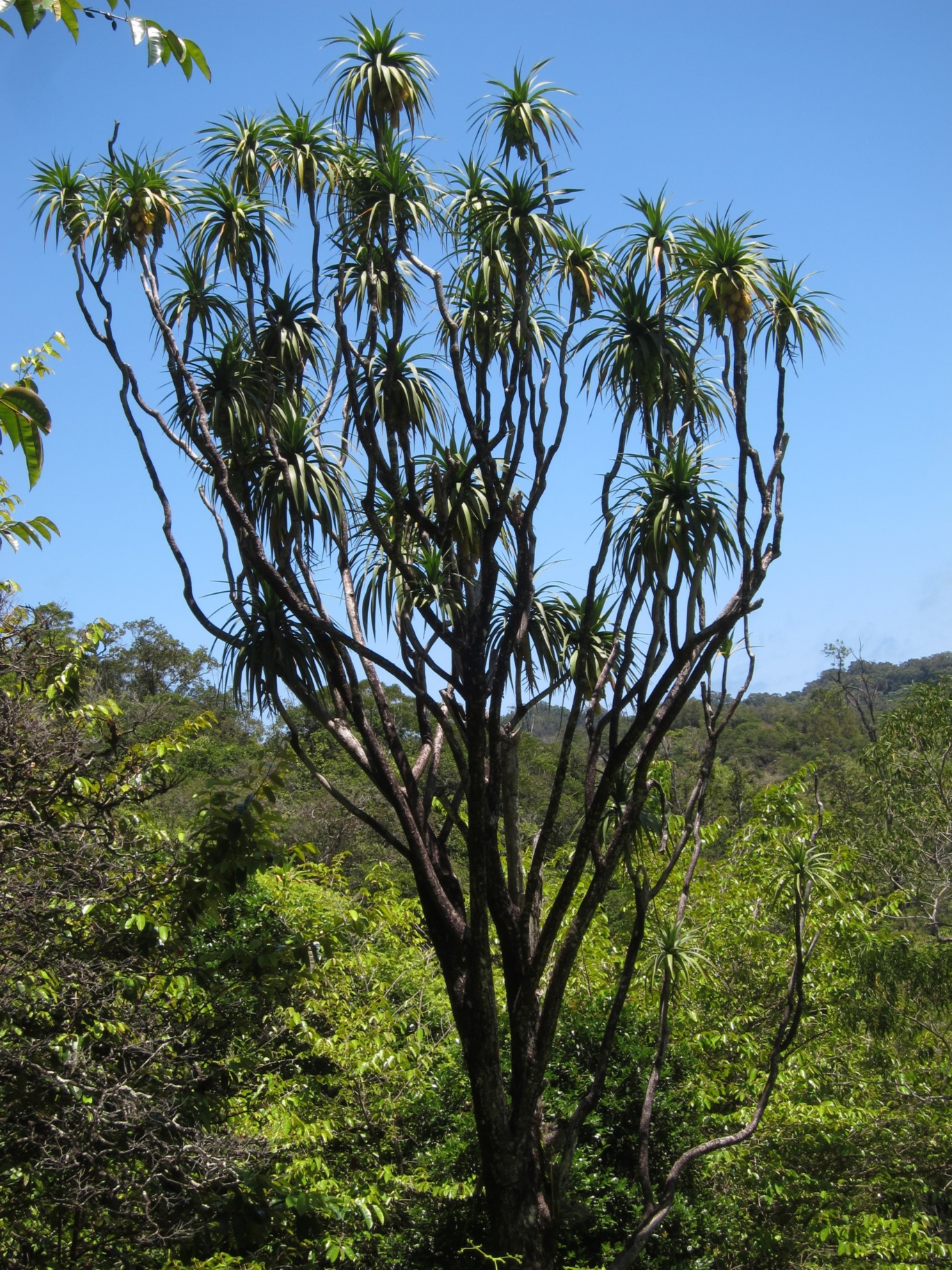Tucked into the deep gulches of the Waianae range, sometimes even in places heavily invaded by alien plants, one can often find halapepe as scattered individual trees or small groves. With pigs scraping their bark and rats preying on their seeds, there are fewer of these ancient trees every year, and in most places no keiki to replace them. But in a few places, they are trying to come back.
Near the back of one gulch is a pair of old trees. These are among the biggest I’ve seen on Oahu, reaching a good 40-50 feet tall with thick, multi-layered trunks covered in aerial roots. Given how slowly they grow, these are probably hundreds of years old.
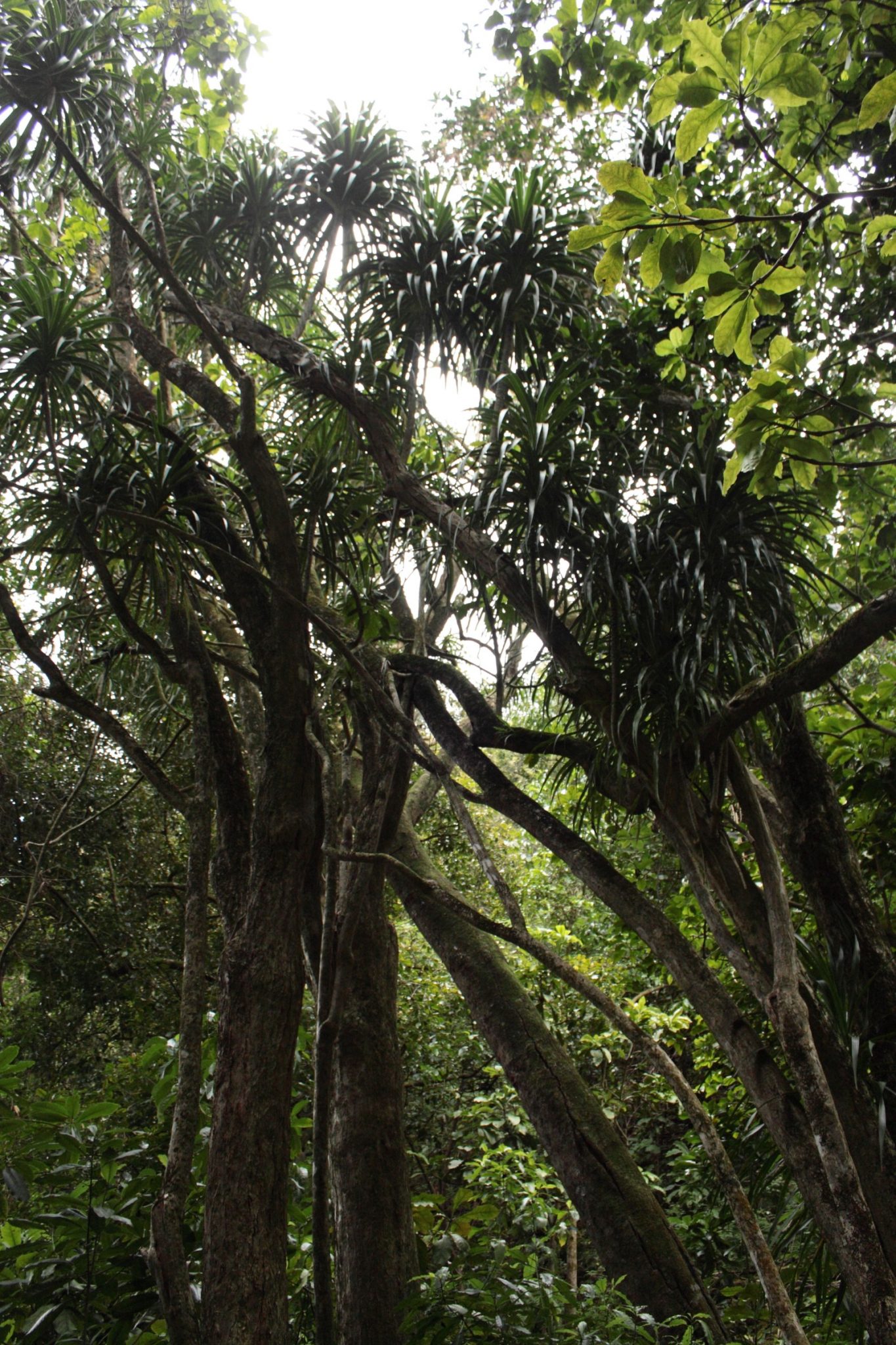
They’re also among the most prolific fruiters. Nearly every year they drop hundreds of seeds, and unlike in most other places, for some reason most of the ones here escape being eaten by rats and germinate. It’s a great sight to see all these tiny seedlings popping up, one I wish we saw more often!

While some reprod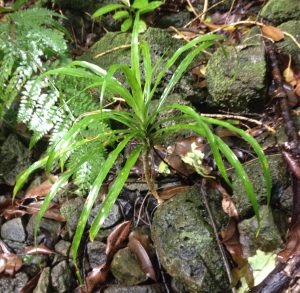 uction is finally taking place again, growth of young plants is extremely slow, so it will be some time before they reach full size. This one is at least three years old, but is still less than a foot tall.
uction is finally taking place again, growth of young plants is extremely slow, so it will be some time before they reach full size. This one is at least three years old, but is still less than a foot tall.
On the up side, while growth from seed has been poor for a long time, the existing trees are great survivors. They can withstand pigs and rats chewing away the bark, and branches that break off and fall to the ground are often capable of rooting and growing into new plants. It’s not uncommon to see a row of trees down a slope that are probably all clones of the uppermost one. Still, they can only take so much, and I’ve seen many trees die in the past few years.
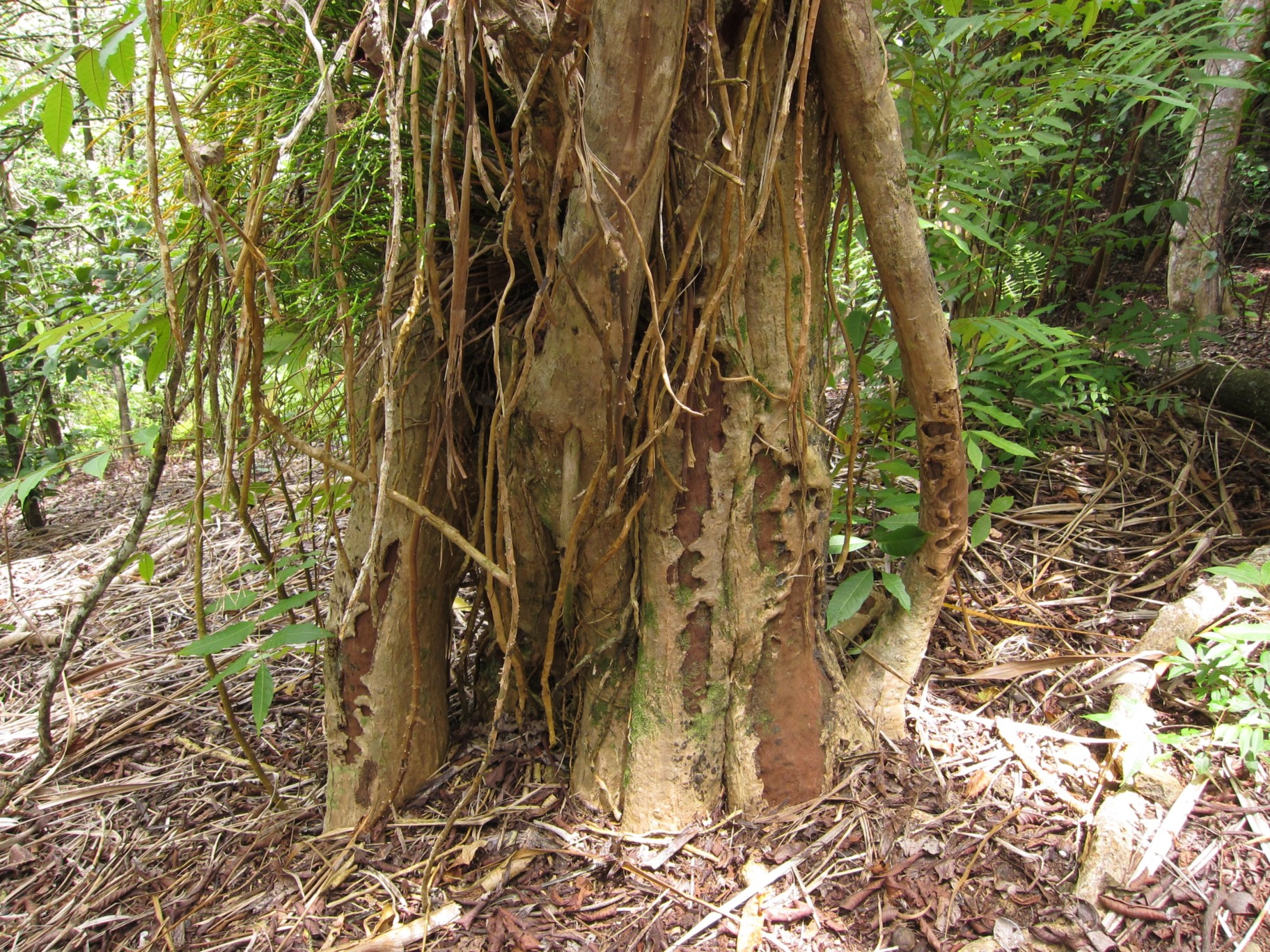
Halapepe is a critical plant for a number of insects, particularly the native Drosophila. Each island has endemic picture-wing species that breed in the decaying bark of dead branches, as well as some remarkable species in the “modified mouthparts” group whose larvae live in the leaf axils of live trees, feeding on the decaying matter that accumulates there. Most of the former are extremely rare and one, D. obatai, is federally listed as endangered. The latter seem to be doing a little better, as they are able to survive in lowland areas with ants where many of the halapepe trees are. Most are undescribed or their host association isn’t recognized.
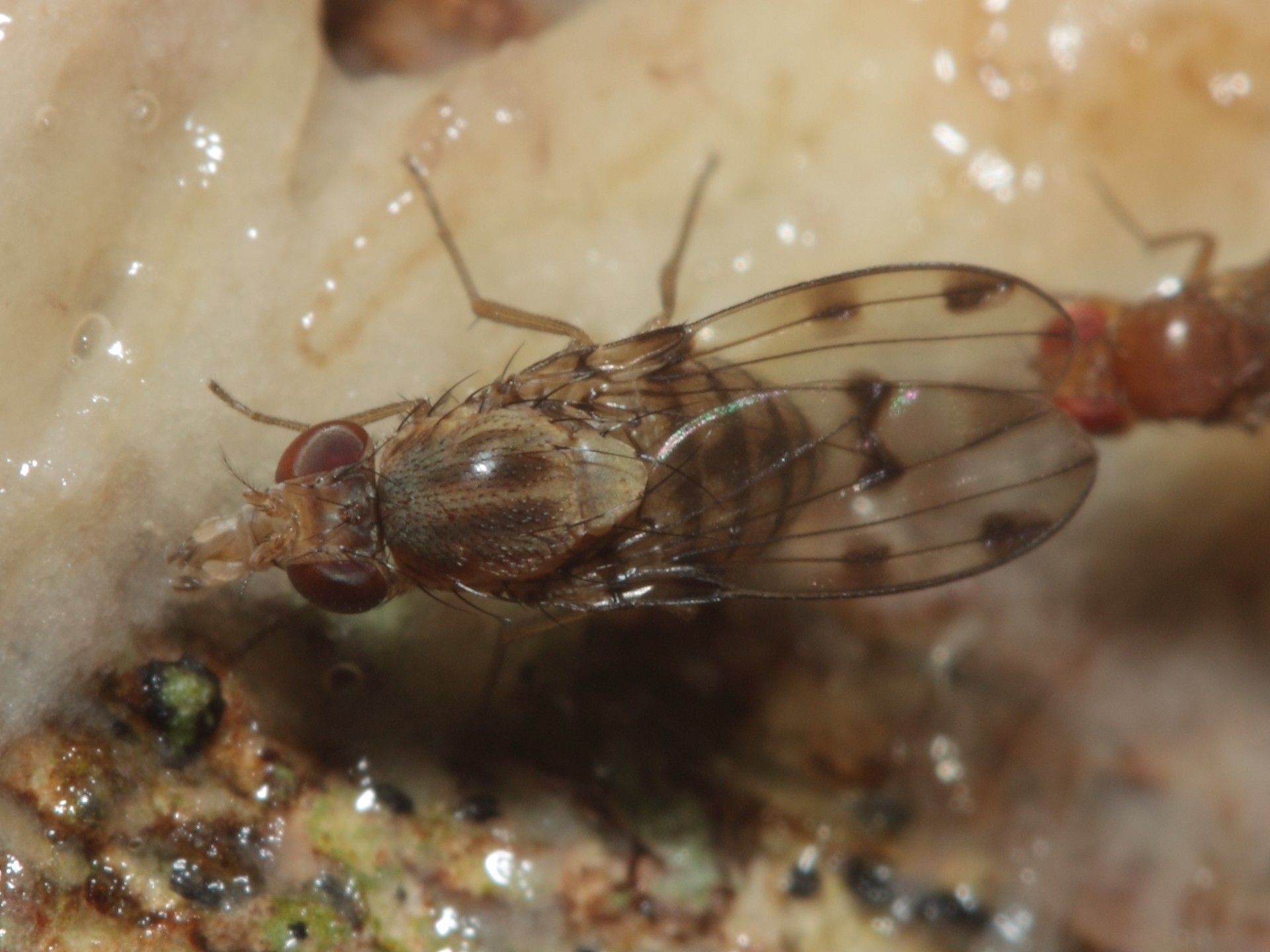
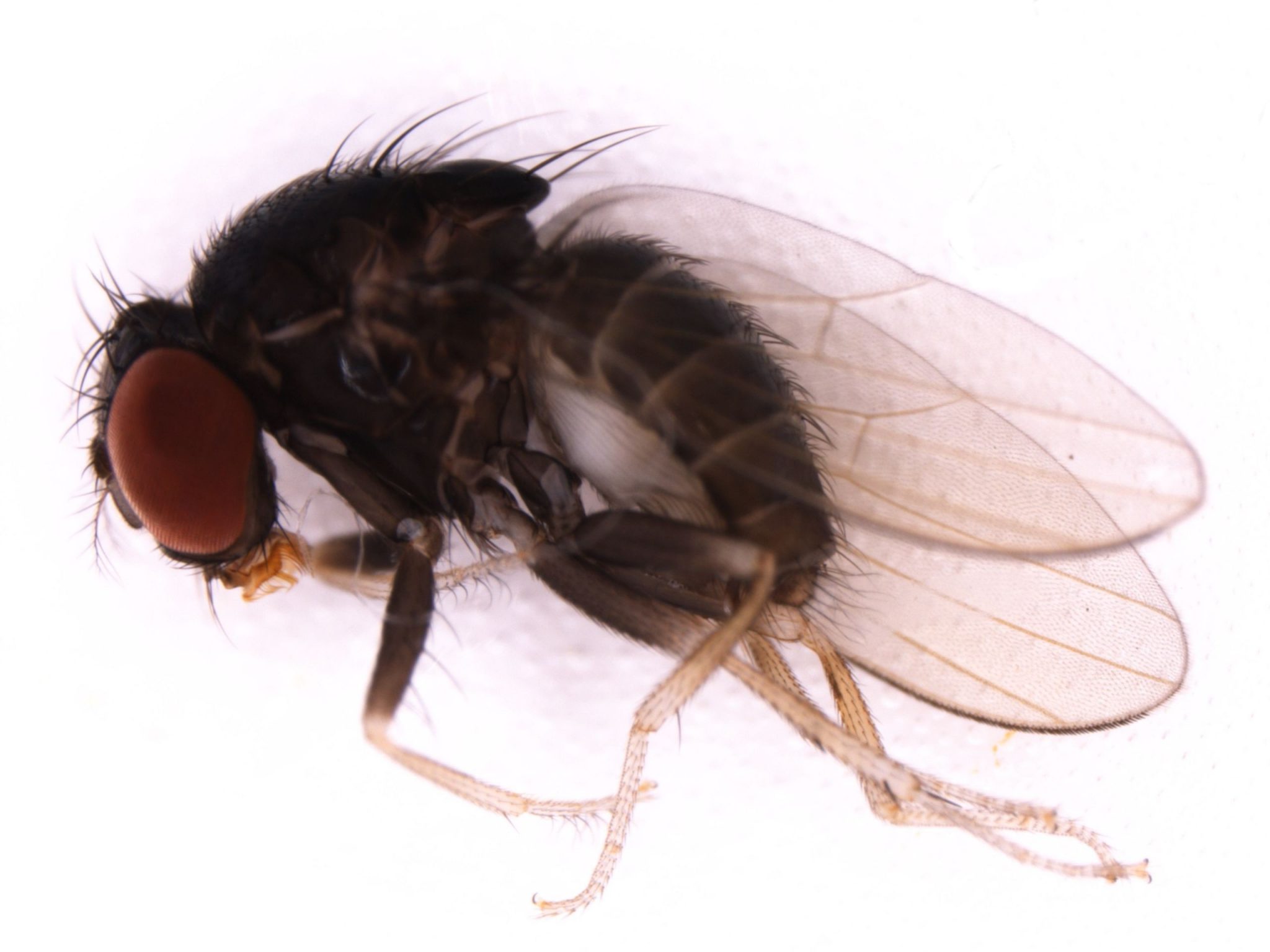
The Hawaiian name halapepe means “flat hala“, referring to the leaves compared to the ridged ones of the similar hala tree (Pandanus tectorius) of the lowlands. Related to the ornamental “money tree” Dracaena marginata and the famous dragon blood trees, Dracaena draco and D. cinnabari, the six Hawaiian endemic species were originally placed in that genus, then moved to Pleomele, and then recently to the endemic genus Chrysodracon – “golden dragon”, from their yellow flowers compared to the white of the other two genera. Two species are found on Oahu, C. halapepe and C. forbesii. The extreme forms are very different, but they intergrade and probably hybridize.
Chrysodracon forbesii is only found in the Waianae range, and can be distinguished by its very narrow leaves (rule of thumb: if they’re narrower than your thumb at the base, it’s C. forbesii) and tendency to grow many-branched and sprawling, without a distinct trunk.
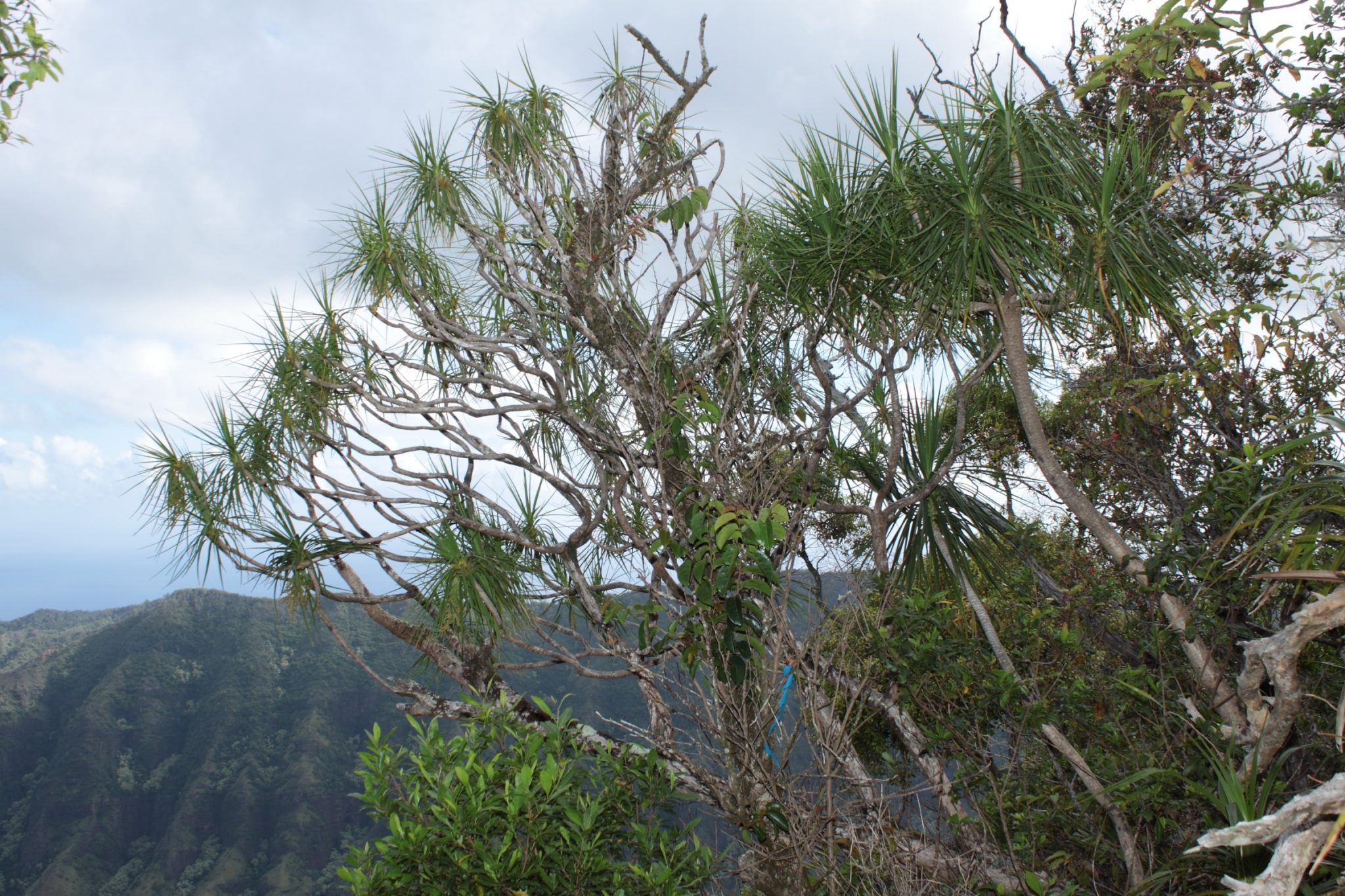
Found in both the Koolaus and Waianaes, C. halapepe has wider leaves and tends to have a single main trunk like the species on other islands, with Y-branches that compulsively send out vertical shoots as they bend over.
